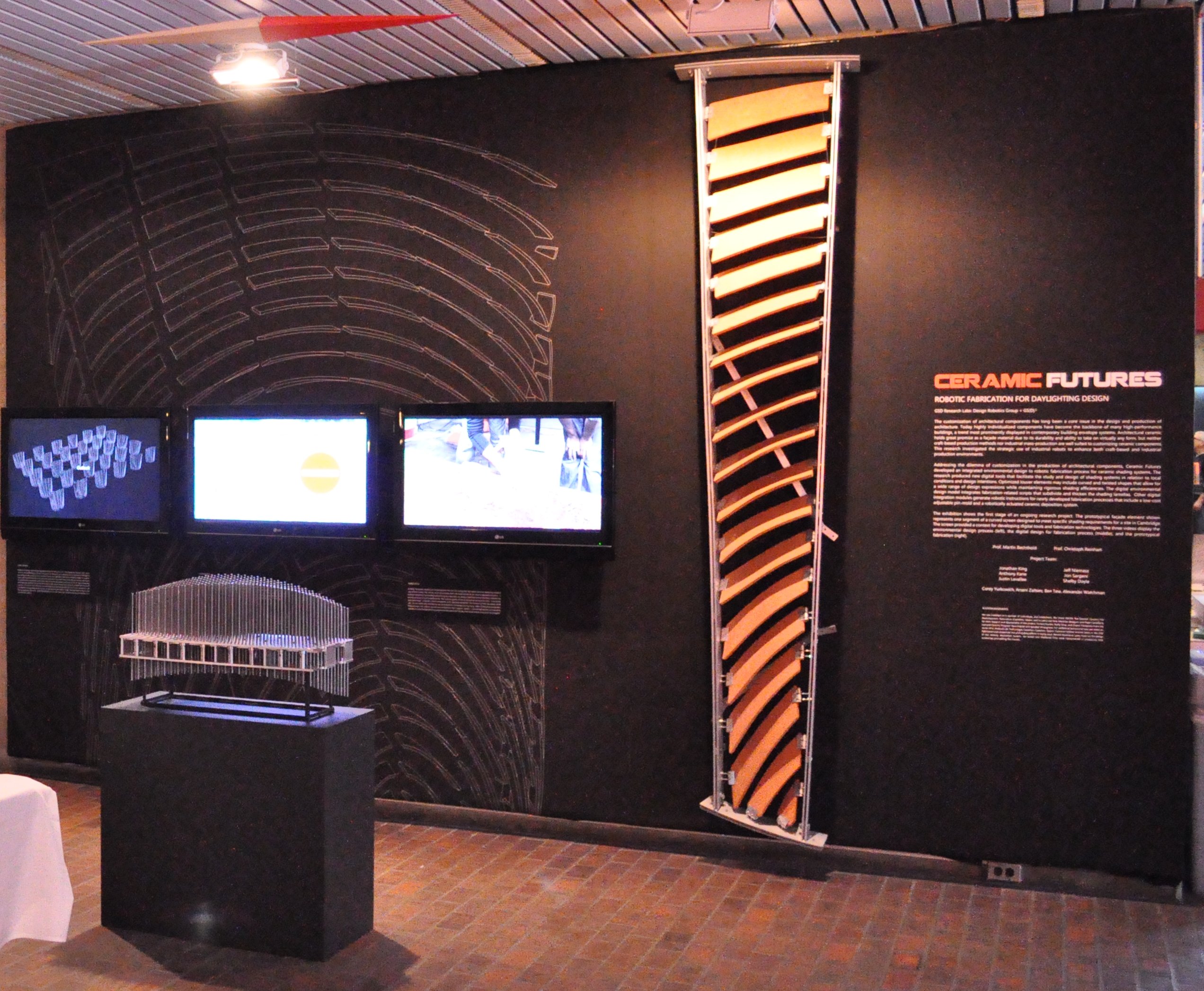Martin Bechthold (PI), Shelby Doyle, Anthony Kane, Jonathan King, Justin Lavallee, Jeff Niemasz, Christoph Reinhart (PI), Jon Sargent, Ben Tew, Corey Yurkowich, Alexander Watchman , Arseni Zaitsev (2011, collaboration with Harvard's Design Robotics Group, supported by ASCER Tiles of Spain)
The customization of architectural components has long been a core issue in the design and production of architecture. Today highly individualized components have become the backbone of many high-performance buildings, a trend most prominently displayed in contemporary building envelope systems. Architectural ceramic holds great promise as a facade material due to its durability and ability to take on virtually any form, but neither craft-based production methods nor industrial mass-production are well suited to customizing ceramic componentss. This research investigated the strategic use of industrial robots to enhance both craft-based and industrial production environments. Addressing the dilemma of customization in the production of architectural components, Ceramic Futures developed an integrated environmental design to robotic fabrication process for ceramic shading systems. The research produced new digital tools that facilitate the study and design of shading systems in relation to local conditions and design intentions. Optimized louver elements may include curved and twisted shapes that allow for a wide range of design expressions while maintaining rigorous shading efficiencies. The digital environmental design model integrates fabrication-related scripts that subdivide and thicken the shading lamellas. Other digital integration modules generate robotic instructions for newly developed fabrication processes that include a low-cost adjustable pin-mold and a robotically actuated ceramic deposition system.

Ceramic Futures Exhibition, Harvard University, Graduate School of Design (March 2011).